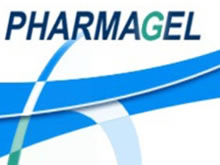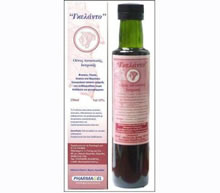
Λεξικό .. Milk allergy, Αλλεργία στο γάλα©.
Milk is one of the first foods introduced into human diet. Milk allergy is the most frequent food allergy in childhood[1]. Milk represents one of the first allergen sources, which induces IgE-mediated allergies in childhood ranging from gastrointestinal, skin, and respiratory manifestations to severe life-threatening manifestations, such as anaphylaxis[3].
Up to 3% of young children develop milk allergy and this may influence the development of immune-mediated diseases in later life [4].
Around 2.5% of neonates experience hypersensitivity reactions to cow's milk protein during the first year of life, which is highly associated with early exposure to cow's milk[2]. Even though cases of newly developed milk allergy in adulthood are known, this allergy is less frequent in adults since it is normally outgrown by children during the first years of life.
One of the reasons why allergy to cow's milk shows its highest prevalence in children is its early introduction into the diets of babies when breast feeding is not possible. The major allergens are caseins and beta-lactoglobulin, but allergies to other minor proteins (immunoglobulins, bovine serum albumin) have also been reported. Milk allergenicity can be reduced by various treatments (mainly hydrolysis), meaning that formulas based on cow's milk can often be safely fed to children allergic to milk proteins[1]. One protein that has been associated with allergic reactions to ruminant milk is α(S1)-casein (CN) [4].
To prevent early allergy development, cow's milk proteins in infant formulas were modified by hydrolyzation processes for use in children at high atopic risk who need milk supplementation in the first months of life. Dependent on the degree of modification, hydrolyzed cow's milk formulas are differentiated into extensively and partially hydrolyzed whey or casein hydrolysates (pHF, eHF). However, their allergy-preventive potential seems not only to dependent on the degree but also on the process of hydrolysis. pHF and eHF can be used for primary prevention of allergy in infants at high atopic risk, while only eHFs are indicated for secondary prevention in patients with manifest cow's milk allergy[2].
Cross-reactivity has been described between different mammalian milks and between milk and meat or animal dander. Cross-contamination can result from inadequate cleaning of industrial equipment and constitutes a hidden danger for allergic subjects who unknowingly ingest milk proteins[1]. In clinical trials a consistent trend to a reduction in atopy, mainly atopic eczema and food allergy, by certain pHFs and eHFs could be demonstrated in children with a familial risk of atopy until the age of 6 years. Because more than 50% of allergic children do not have a family history of atopy, it would be worthwhile to consider primary allergy prevention with hydrolysates for all children who need supplementation to breastfeeding.
Schulmeister U, et al (2009) isolated a cDNA coding for a major cow's milk allergen, alphaS1-casein, from a bovine mammary gland cDNA library with allergic patients' IgE Abs. Recombinant alphaS1-casein was expressed in Escherichia coli, purified, and characterized by circular dichroism as a folded protein. IgE epitopes of alphaS1-casein were determined with recombinant fragments and synthetic peptides spanning the alphaS1-casein sequence using microarrayed components and sera from 66 cow's milk-sensitized patients [3].
The allergenic activity of ralphaS1-casein and the alphaS1-casein-derived peptides was determined using rat basophil leukemia cells transfected with human FcepsilonRI, which had been loaded with the patients' serum IgE[3]. Our results demonstrate that ralphaS1-casein as well as alphaS1-casein-derived peptides exhibit IgE reactivity, but mainly the intact ralphaS1-casein induced strong basophil degranulation.
These results suggest that primarily intact alphaS1-casein or larger IgE-reactive portions thereof are responsible for IgE-mediated symptoms of food allergy. Recombinant alphaS1-casein as well as alphaS1-casein-derived peptides may be used in clinical studies to further explore pathomechanisms of food allergy as well as for the development of new diagnostic and therapeutic strategies for milk allergy[3].
Copyright: Dr Gelis N. Dimitrios, MD, ORL, DDS, PhD. Gelis' Dictionary of Allergy, Vellerofontis Edition, Korinthos, Greece, 2013
References
1. Restani P, Ballabio C, Di Lorenzo C, Tripodi S, Fiocchi A. Molecular aspects of milk allergens and their role in clinical events. Anal Bioanal Chem. 2009 Sep;395(1):47-56.
2. von Berg A. Modified Proteins in Allergy Prevention. Nestle Nutr Workshop Ser Pediatr Program. 2009;64:239-250. Epub 2009 Aug 19.
3. Schulmeister U, Hochwallner H, Swoboda I, Focke-Tejkl M, Geller B, Nystrand M, Härlin A, Thalhamer J, Scheiblhofer S, Keller W, Niggemann B, Quirce S, Ebner C, Mari A, Pauli G, Herz U, Valenta R, Spitzauer S. Cloning, expression, and mapping of allergenic determinants of alphaS1-casein, a major cow's milk allergen. J Immunol. 2009 Jun 1;182(11):7019-29. 4. Hodgkinson AJ, McDonald NA, Kivits LJ, Hurford DR, Fahey S, Prosser C. Allergic responses induced by goat milk αS1-casein in a murine model of gastrointestinal atopy. J Dairy Sci. 2012 Jan;95(1):83-90.

Γκέλης Ν.Δ. - Λεξικό Αλλεργίας - Εκδόσεις ΒΕΛΛΕΡOΦΟΝΤΗΣ - Κόρινθος 2013
Gelis Ν.D. - Dictionary of Allergies - VELLEROFONTIS Publications - Corinth 2013




